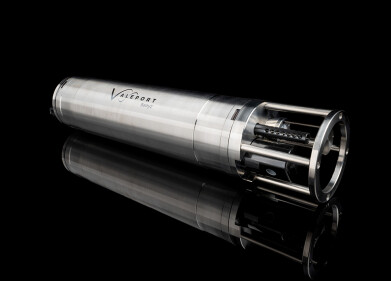Business News
Is Australia Right to Invest in Coal?
Jan 24 2017
Earlier this month, the Australian minister for resources touted a new study which he claimed proved that updating coal power technology could curb emissions by up to 27%. Such a reduction would go a long way to achieving Australia’s long term goal (as agreed upon at last year’s climate change talks in Paris) of bringing emissions down 28% by 2030.
However, critics of the minister argue that the data has been misinterpreted, with any switch to cleaner coal technologies generating a maximum of 12% reduction. What’s more, they claim that persisting with coal when there are cleaner, greener and cheaper forms of energy generation available, makes absolutely no environmental or economic sense in the long term.
Misinterpretation of the raw data
Despite announcing its intention to tax carbon pollution and bring down emissions as long ago as 2008, Australia has rigidly stuck to coal as its chief energy generation method. This latest study was commissioned by Matt Canavan, the nation’s minister for resources, and undertaken by the Department of Industry, Innovation and Science. It was conducted in order to shed some light on how much more efficient and how less polluting the new “ultra-supercritical” coal technology would prove to be if it was implemented.
On the 17th January, The Australian newspaper reported that the study had found the new technology could bring emissions down by almost as much as the 2030 target, prompting Canavan to champion coal as a viable investment for the future.
“Coal has an important role to play as Australia, and the rest of the world, reduce carbon dioxide emissions,” he said in a statement. “Australia has the resources to be a low-cost and efficient energy superpower. Access to affordable and reliable power underpins our economy and is the key to long-term jobs in the manufacturing sector.”
However, an analysis of the study reveals even if the incredibly expensive and time-consuming upgrades were to be pursued, the new technology would only reduce emissions by a maximum of 12%.
Renewables the only feasible option
Since electricity only accounts for less than a third of Australia’s total emissions, the coal stations which produce the power for its electrical grid would necessarily have to be brought down to zero emissions in order to meet that 2030 goal.
Therefore, investing in a new form of coal energy generation (no matter how much more environmentally-friendly it is) would never achieve zero emissions and as such cannot be seen as a sensible investment option.
This becomes particularly true when you take into account the fact that almost all solar and wind farms are now more affordable than the new coal technology – and produce none of the pollution. With that in mind, it seems nonsensical for Canavan to continue to neglect renewables in favour of the antiquated, ultra-polluting coal technology Australia has clung to for so many years.
“For a government that has been so vocal about not picking winners, the Turnbull government seems to be very comfortable picking coal as Australia’s future energy source,” said Mark Butler, the climate change and energy minister for Labor.
“The latest intervention by Minister Canavan trumpeting coal isn’t about securing a reliable and affordable energy future; at its core it is just the latest ideological attack on renewables by a government desperate to draw attention away from the fact it has no plan on energy and climate.”
Digital Edition
AET 28.4 Oct/Nov 2024
November 2024
Gas Detection - Go from lagging to leading: why investment in gas detection makes sense Air Monitoring - Swirl and vortex meters will aid green hydrogen production - Beyond the Stack: Emi...
View all digital editions
Events
Dec 02 2024 London, UK
Dec 03 2024 Dusseldorf, Germany
Dec 11 2024 Shanghai, China
Jan 12 2025 Abu Dhabi, UAE
Jan 14 2025 Abu Dhabi, UAE









.jpg)









